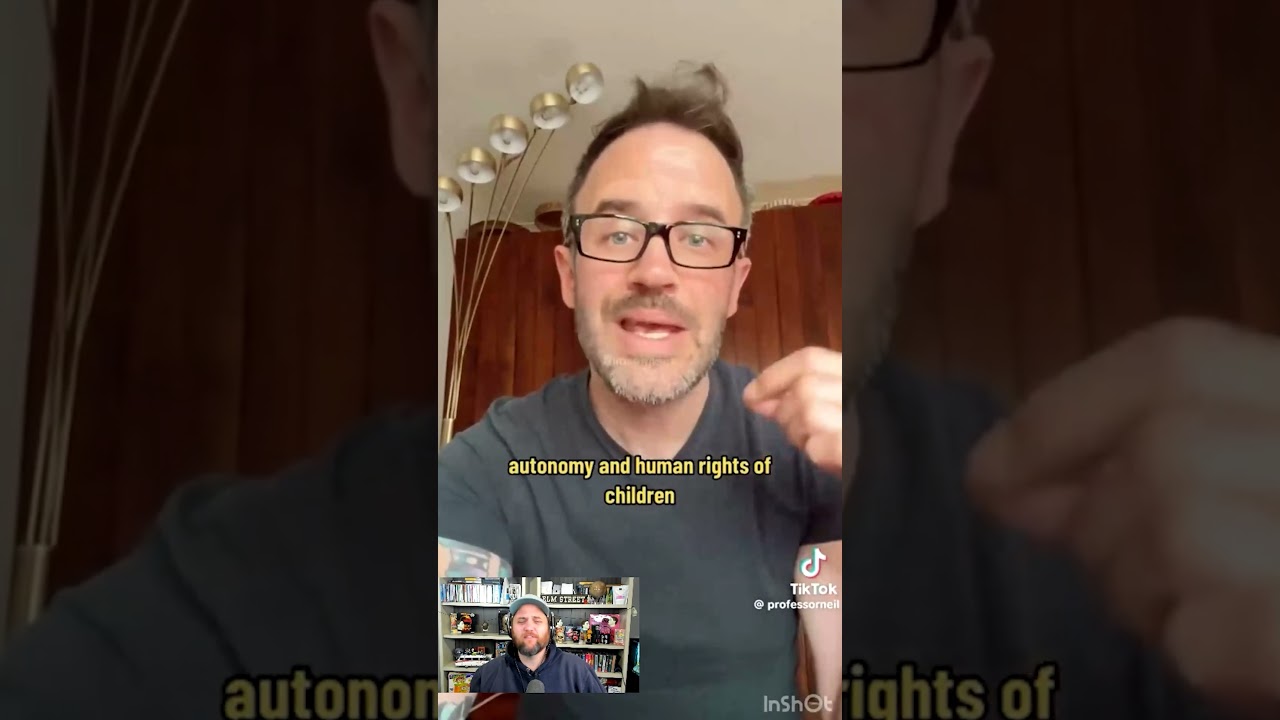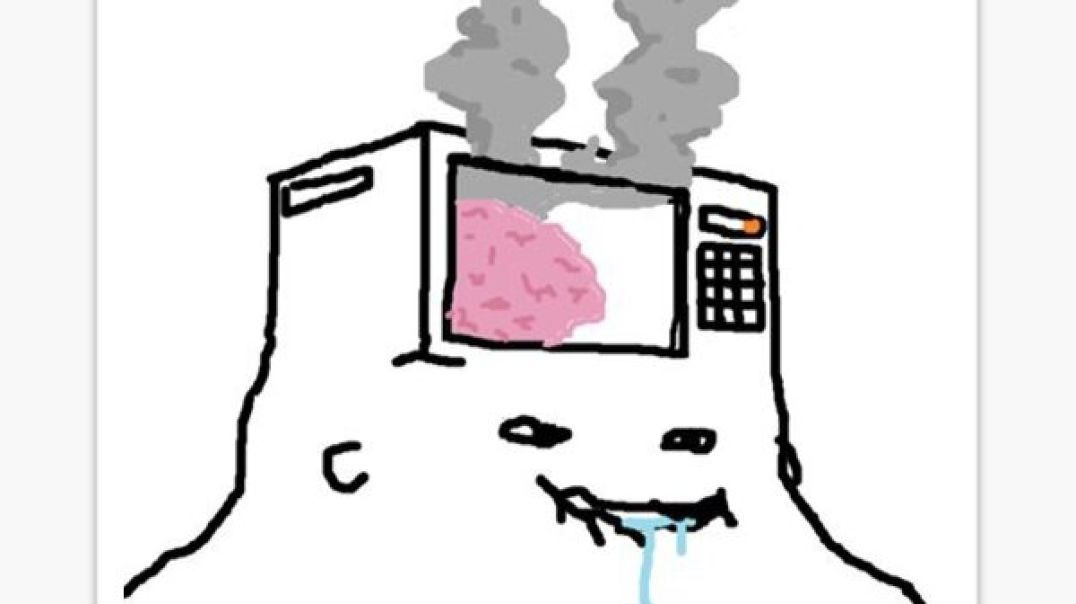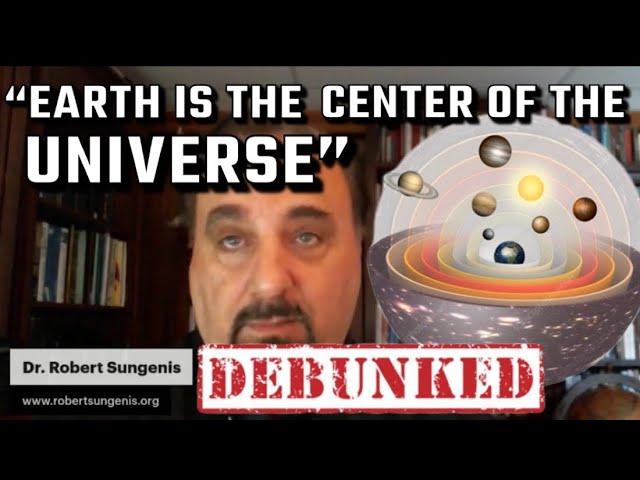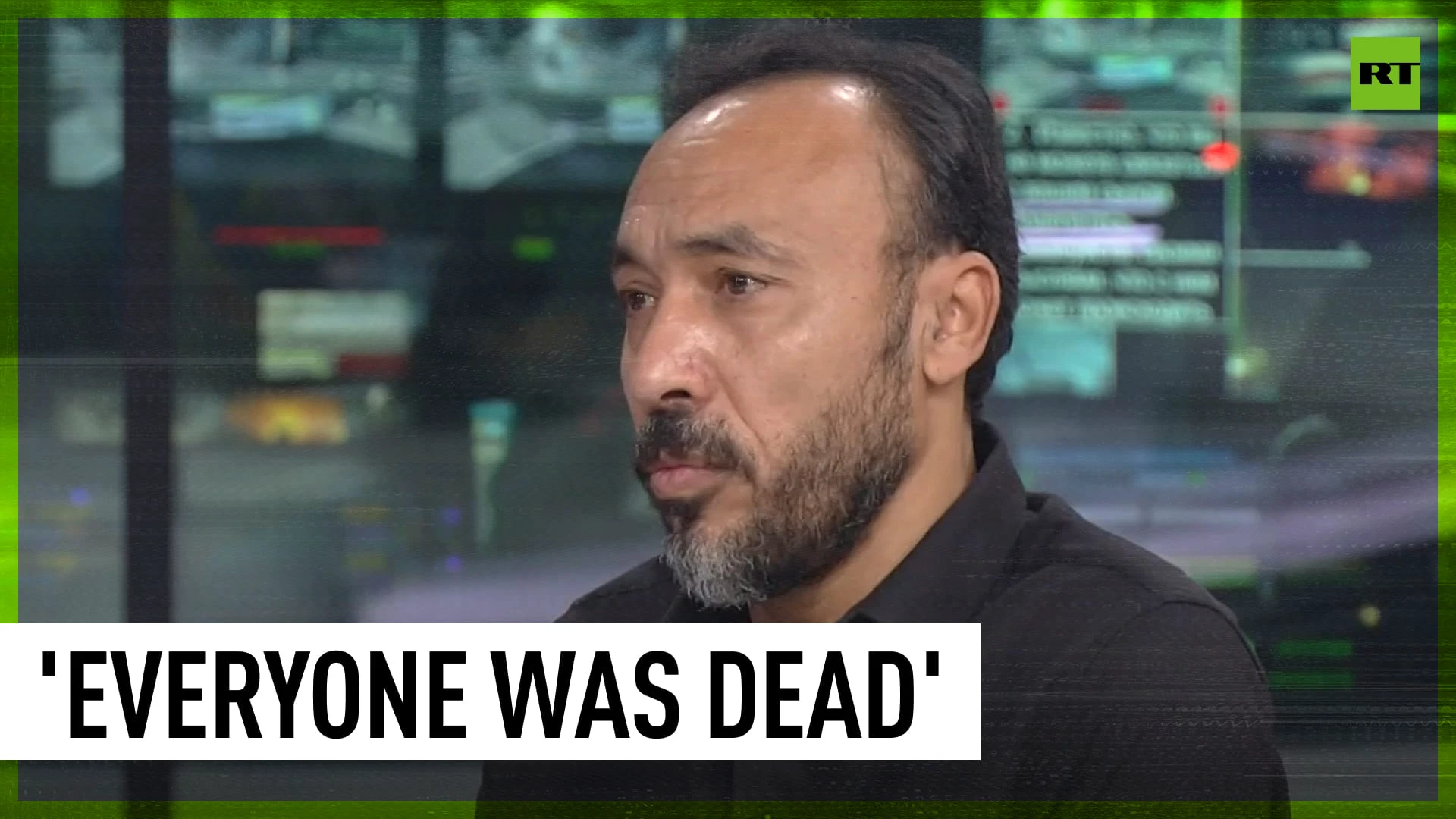close
Dear Creators, we are proud to announce an amazing affiliate program for you to earn some serious and continual cash. Read about our affiliate progarm here.
Caros criadores, temos o orgulho de anunciar um incrível programa de afiliados para vocês ganharem muito dinheiro de forma contínua. Leia sobre nosso programa de afiliados aqui.
In His Own Words
25 Views
• 06/13/23
2
0
Embed
Download
Life_N_Times_of_Shane_T_Hanson
209 Subscribers
Unabomber <br>S1E1 - As his infamy grows, Ted Kaczynski finds his footing as a serial bomber while authorities desperately search for a pattern with his earliest targets.
Show more























SORT BY-
Top Comments
-
Latest comments
I have looked into the codes that this guy developed and how they were cracked.
It's interesting - but then millions of other things are as well.
This guy was clearly quite fucked up - but like all things - to some people:
1. He might be a subject of interest to examine and learn from.
2. He might be mostly meaningless and of no particular interest.
3. He might be considered to be a complete terd and a waste of fucking time.
It's up to you to make your mind up - is Kazinsky a topic of great interest, a fucking nutter, or to be condemned.
https://ciphermysteries.com/20....13/03/31/the-unabomb
https://www.youtube.com/watch?v=2aqx67s19mA
https://www.schneier.com/blog/....archives/2006/12/una
https://en.wikipedia.org/wiki/Ted_Kaczynski
There is a lot out there.
https://en.wikipedia.org/wiki/....Why_The_Future_Doesn
https://web.archive.org/web/20....140318160824/http://
Why the future doesn't need us.
Our most powerful 21st-century technologies - robotics, genetic engineering, and nanotech - are threatening to make humans an endangered species.
By Bill Joy
From the moment I became involved in the creation of new technologies, their ethical dimensions have concerned me, but it was only in the autumn of 1998 that I became anxiously aware of how great are the dangers facing us in the 21st century. I can date the onset of my unease to the day I met Ray Kurzweil, the deservedly famous inventor of the first reading machine for the blind and many other amazing things.
Ray and I were both speakers at George Gilder's Telecosm conference, and I encountered him by chance in the bar of the hotel after both our sessions were over. I was sitting with John Searle, a Berkeley philosopher who studies consciousness. While we were talking, Ray approached and a conversation began, the subject of which haunts me to this day.
I had missed Ray's talk and the subsequent panel that Ray and John had been on, and they now picked right up where they'd left off, with Ray saying that the rate of improvement of technology was going to accelerate and that we were going to become robots or fuse with robots or something like that, and John countering that this couldn't happen, because the robots couldn't be conscious.
While I had heard such talk before, I had always felt sentient robots were in the realm of science fiction. But now, from someone I respected, I was hearing a strong argument that they were a near-term possibility. I was taken aback, especially given Ray's proven ability to imagine and create the future. I already knew that new technologies like genetic engineering and nanotechnology were giving us the power to remake the world, but a realistic and imminent scenario for intelligent robots surprised me.
It's easy to get jaded about such breakthroughs. We hear in the news almost every day of some kind of technological or scientific advance. Yet this was no ordinary prediction. In the hotel bar, Ray gave me a partial preprint of his then-forthcoming bookThe Age of Spiritual Machines, which outlined a utopia he foresaw - one in which humans gained near immortality by becoming one with robotic technology. On reading it, my sense of unease only intensified; I felt sure he had to be understating the dangers, understating the probability of a bad outcome along this path.
I found myself most troubled by a passage detailing adystopian scenario:
THE NEW LUDDITE CHALLENGE
First let us postulate that the computer scientists succeed in developing intelligent machines that can do all things better than human beings can do them. In that case presumably all work will be done by vast, highly organized systems of machines and no human effort will be necessary. Either of two cases might occur. The machines might be permitted to make all of their own decisions without human oversight, or else human control over the machines might be retained.
If the machines are permitted to make all their own decisions, we can't make any conjectures as to the results, because it is impossible to guess how such machines might behave. We only point out that the fate of the human race would be at the mercy of the machines. It might be argued that the human race would never be foolish enough to hand over all the power to the machines. But we are suggesting neither that the human race would voluntarily turn power over to the machines nor that the machines would willfully seize power. What we do suggest is that the human race might easily permit itself to drift into a position of such dependence on the machines that it would have no practical choice but to accept all of the machines' decisions. As society and the problems that face it become more and more complex and machines become more and more intelligent, people will let machines make more of their decisions for them, simply because machine-made decisions will bring better results than man-made ones. Eventually a stage may be reached at which the decisions necessary to keep the system running will be so complex that human beings will be incapable of making them intelligently. At that stage the machines will be in effective control. People won't be able to just turn the machines off, because they will be so dependent on them that turning them off would amount to suicide.
On the other hand it is possible that human control over the machines may be retained. In that case the average man may have control over certain private machines of his own, such as his car or his personal computer, but control over large systems of machines will be in the hands of a tiny elite - just as it is today, but with two differences. Due to improved techniques the elite will have greater control over the masses; and because human work will no longer be necessary the masses will be superfluous, a useless burden on the system. If the elite is ruthless they may simply decide to exterminate the mass of humanity. If they are humane they may use propaganda or other psychological or biological techniques to reduce the birth rate until the mass of humanity becomes extinct, leaving the world to the elite. Or, if the elite consists of soft-hearted liberals, they may decide to play the role of good shepherds to the rest of the human race. They will see to it that everyone's physical needs are satisfied, that all children are raised under psychologically hygienic conditions, that everyone has a wholesome hobby to keep him busy, and that anyone who may become dissatisfied undergoes "treatment" to cure his "problem." Of course, life will be so purposeless that people will have to be biologically or psychologically engineered either to remove their need for the power process or make them "sublimate" their drive for power into some harmless hobby. These engineered human beings may be happy in such a society, but they will most certainly not be free. They will have been reduced to the status of domestic animals.1
In the book, you don't discover until you turn the page that the author of this passage is Theodore Kaczynski - the Unabomber. I am no apologist for Kaczynski. His bombs killed three people during a 17-year terror campaign and wounded many others. One of his bombs gravely injured my friend David Gelernter, one of the most brilliant and visionary computer scientists of our time. Like many of my colleagues, I felt that I could easily have been the Unabomber's next target.
Kaczynski's actions were murderous and, in my view, criminally insane. He is clearly a Luddite, but simply saying this does not dismiss his argument; as difficult as it is for me to acknowledge, I saw some merit in the reasoning in this single passage. I felt compelled to confront it.
Kaczynski's dystopian vision describes unintended consequences, a well-known problem with the design and use of technology, and one that is clearly related to Murphy's law - "Anything that can go wrong, will." (Actually, this is Finagle's law, which in itself shows that Finagle was right.) Our overuse of antibiotics has led to what may be the biggest such problem so far: the emergence of antibiotic-resistant and much more dangerous bacteria. Similar things happened when attempts to eliminate malarial mosquitoes using DDT caused them to acquire DDT resistance; malarial parasites likewise acquired multi-drug-resistant genes.2
The cause of many such surprises seems clear: The systems involved are complex, involving interaction among and feedback between many parts. Any changes to such a system will cascade in ways that are difficult to predict; this is especially true when human actions are involved.
I started showing friends the Kaczynski quote fromThe Age of Spiritual Machines; I would hand them Kurzweil's book, let them read the quote, and then watch their reaction as they discovered who had written it. At around the same time, I found Hans Moravec's bookRobot: Mere Machine to Transcendent Mind. Moravec is one of the leaders in robotics research, and was a founder of the world's largest robotics research program, at Carnegie Mellon University.Robot gave me more material to try out on my friends - material surprisingly supportive of Kaczynski's argument. For example:
The Short Run (Early 2000s)
Biological species almost never survive encounters with superior competitors. Ten million years ago, South and North America were separated by a sunken Panama isthmus. South America, like Australia today, was populated by marsupial mammals, including pouched equivalents of rats, deers, and tigers. When the isthmus connecting North and South America rose, it took only a few thousand years for the northern placental species, with slightly more effective metabolisms and reproductive and nervous systems, to displace and eliminate almost all the southern marsupials.
In a completely free marketplace, superior robots would surely affect humans as North American placentals affected South American marsupials (and as humans have affected countless species). Robotic industries would compete vigorously among themselves for matter, energy, and space, incidentally driving their price beyond human reach. Unable to afford the necessities of life, biological humans would be squeezed out of existence.
There is probably some breathing room, because we do not live in a completely free marketplace. Government coerces nonmarket behavior, especially by collecting taxes. Judiciously applied, governmental coercion could support human populations in high style on the fruits of robot labor, perhaps for a long while.
A textbook dystopia - and Moravec is just getting wound up. He goes on to discuss how our main job in the 21st century will be "ensuring continued cooperation from the robot industries" by passing laws decreeing that they be "nice,"3 and to describe how seriously dangerous a human can be "once transformed into an unbounded superintelligent robot." Moravec's view is that the robots will eventually succeed us - that humans clearly face extinction.
I decided it was time to talk to my friend Danny Hillis. Danny became famous as the cofounder of Thinking Machines Corporation, which built a very powerful parallel supercomputer. Despite my current job title of Chief Scientist at Sun Microsystems, I am more a computer architect than a scientist, and I respect Danny's knowledge of the information and physical sciences more than that of any other single person I know. Danny is also a highly regarded futurist who thinks long-term - four years ago he started the Long Now Foundation, which is building a clock designed to last 10,000 years, in an attempt to draw attention to the pitifully short attention span of our society. (See "Test of Time,"Wired 8.03, page 78.)
So I flew to Los Angeles for the express purpose of having dinner with Danny and his wife, Pati. I went through my now-familiar routine, trotting out the ideas and passages that I found so disturbing. Danny's answer - directed specifically at Kurzweil's scenario of humans merging with robots - came swiftly, and quite surprised me. He said, simply, that the changes would come gradually, and that we would get used to them.
But I guess I wasn't totally surprised. I had seen a quote from Danny in Kurzweil's book in which he said, "I'm as fond of my body as anyone, but if I can be 200 with a body of silicon, I'll take it." It seemed that he was at peace with this process and its attendant risks, while I was not.
While talking and thinking about Kurzweil, Kaczynski, and Moravec, I suddenly remembered a novel I had read almost 20 years ago -The White Plague, by Frank Herbert - in which a molecular biologist is driven insane by the senseless murder of his family. To seek revenge he constructs and disseminates a new and highly contagious plague that kills widely but selectively. (We're lucky Kaczynski was a mathematician, not a molecular biologist.) I was also reminded of the Borg ofStar Trek, a hive of partly biological, partly robotic creatures with a strong destructive streak. Borg-like disasters are a staple of science fiction, so why hadn't I been more concerned about such robotic dystopias earlier? Why weren't other people more concerned about these nightmarish scenarios?
Part of the answer certainly lies in our attitude toward the new - in our bias toward instant familiarity and unquestioning acceptance. Accustomed to living with almost routine scientific breakthroughs, we have yet to come to terms with the fact that the most compelling 21st-century technologies - robotics, genetic engineering, and nanotechnology - pose a different threat than the technologies that have come before. Specifically, robots, engineered organisms, and nanobots share a dangerous amplifying factor: They can self-replicate. A bomb is blown up only once - but one bot can become many, and quickly get out of control.
Much of my work over the past 25 years has been on computer networking, where the sending and receiving of messages creates the opportunity for out-of-control replication. But while replication in a computer or a computer network can be a nuisance, at worst it disables a machine or takes down a network or network service. Uncontrolled self-replication in these newer technologies runs a much greater risk: a risk of substantial damage in the physical world.
Each of these technologies also offers untold promise: The vision of near immortality that Kurzweil sees in his robot dreams drives us forward; genetic engineering may soon provide treatments, if not outright cures, for most diseases; and nanotechnology and nanomedicine can address yet more ills. Together they could significantly extend our average life span and improve the quality of our lives. Yet, with each of these technologies, a sequence of small, individually sensible advances leads to an accumulation of great power and, concomitantly, great danger.
What was different in the 20th century? Certainly, the technologies underlying the weapons of mass destruction (WMD) - nuclear, biological, and chemical (NBC) - were powerful, and the weapons an enormous threat. But building nuclear weapons required, at least for a time, access to both rare - indeed, effectively unavailable - raw materials and highly protected information; biological and chemical weapons programs also tended to require large-scale activities.
The 21st-century technologies - genetics, nanotechnology, and robotics (GNR) - are so powerful that they can spawn whole new classes of accidents and abuses. Most dangerously, for the first time, these accidents and abuses are widely within the reach of individuals or small groups. They will not require large facilities or rare raw materials. Knowledge alone will enable the use of them.
Thus we have the possibility not just of weapons of mass destruction but of knowledge-enabled mass destruction (KMD), this destructiveness hugely amplified by the power of self-replication.
I think it is no exaggeration to say we are on the cusp of the further perfection of extreme evil, an evil whose possibility spreads well beyond that which weapons of mass destruction bequeathed to the nation-states, on to a surprising and terrible empowerment of extreme individuals.
Nothing about the way I got involved with computers suggested to me that I was going to be facing these kinds of issues.
My life has been driven by a deep need to ask questions and find answers. When I was 3, I was already reading, so my father took me to the elementary school, where I sat on the principal's lap and read him a story. I started school early, later skipped a grade, and escaped into books - I was incredibly motivated to learn. I asked lots of questions, often driving adults to distraction.
As a teenager I was very interested in science and technology. I wanted to be a ham radio operator but didn't have the money to buy the equipment. Ham radio was the Internet of its time: very addictive, and quite solitary. Money issues aside, my mother put her foot down - I was not to be a ham; I was antisocial enough already.
I may not have had many close friends, but I was awash in ideas. By high school, I had discovered the great science fiction writers. I remember especially Heinlein'sHave Spacesuit Will Travel and Asimov's I, Robot, with its Three Laws of Robotics. I was enchanted by the descriptions of space travel, and wanted to have a telescope to look at the stars; since I had no money to buy or make one, I checked books on telescope-making out of the library and read about making them instead. I soared in my imagination.
Thursday nights my parents went bowling, and we kids stayed home alone. It was the night of Gene Roddenberry's original Star Trek, and the program made a big impression on me. I came to accept its notion that humans had a future in space, Western-style, with big heroes and adventures. Roddenberry's vision of the centuries to come was one with strong moral values, embodied in codes like the Prime Directive: to not interfere in the development of less technologically advanced civilizations. This had an incredible appeal to me; ethical humans, not robots, dominated this future, and I took Roddenberry's dream as part of my own.
I excelled in mathematics in high school, and when I went to the University of Michigan as an undergraduate engineering student I took the advanced curriculum of the mathematics majors. Solving math problems was an exciting challenge, but when I discovered computers I found something much more interesting: a machine into which you could put a program that attempted to solve a problem, after which the machine quickly checked the solution. The computer had a clear notion of correct and incorrect, true and false. Were my ideas correct? The machine could tell me. This was very seductive.
I was lucky enough to get a job programming early supercomputers and discovered the amazing power of large machines to numerically simulate advanced designs. When I went to graduate school at UC Berkeley in the mid-1970s, I started staying up late, often all night, inventing new worlds inside the machines. Solving problems. Writing the code that argued so strongly to be written.
InThe Agony and the Ecstasy, Irving Stone's biographical novel of Michelangelo, Stone described vividly how Michelangelo released the statues from the stone, "breaking the marble spell," carving from the images in his mind.4 In my most ecstatic moments, the software in the computer emerged in the same way. Once I had imagined it in my mind I felt that it was already there in the machine, waiting to be released. Staying up all night seemed a small price to pay to free it - to give the ideas concrete form.
After a few years at Berkeley I started to send out some of the software I had written - an instructional Pascal system, Unix utilities, and a text editor called vi (which is still, to my surprise, widely used more than 20 years later) - to others who had similar small PDP-11 and VAX minicomputers. These adventures in software eventually turned into the Berkeley version of the Unix operating system, which became a personal "success disaster" - so many people wanted it that I never finished my PhD. Instead I got a job working for Darpa putting Berkeley Unix on the Internet and fixing it to be reliable and to run large research applications well. This was all great fun and very rewarding. And, frankly, I saw no robots here, or anywhere near.
Still, by the early 1980s, I was drowning. The Unix releases were very successful, and my little project of one soon had money and some staff, but the problem at Berkeley was always office space rather than money - there wasn't room for the help the project needed, so when the other founders of Sun Microsystems showed up I jumped at the chance to join them. At Sun, the long hours continued into the early days of workstations and personal computers, and I have enjoyed participating in the creation of advanced microprocessor technologies and Internet technologies such as Java and Jini.
From all this, I trust it is clear that I am not a Luddite. I have always, rather, had a strong belief in the value of the scientific search for truth and in the ability of great engineering to bring material progress. The Industrial Revolution has immeasurably improved everyone's life over the last couple hundred years, and I always expected my career to involve the building of worthwhile solutions to real problems, one problem at a time.
I have not been disappointed. My work has had more impact than I had ever hoped for and has been more widely used than I could have reasonably expected. I have spent the last 20 years still trying to figure out how to make computers as reliable as I want them to be (they are not nearly there yet) and how to make them simple to use (a goal that has met with even less relative success). Despite some progress, the problems that remain seem even more daunting.
But while I was aware of the moral dilemmas surrounding technology's consequences in fields like weapons research, I did not expect that I would confront such issues in my own field, or at least not so soon.
Perhaps it is always hard to see the bigger impact while you are in the vortex of a change. Failing to understand the consequences of our inventions while we are in the rapture of discovery and innovation seems to be a common fault of scientists and technologists; we have long been driven by the overarching desire to know that is the nature of science's quest, not stopping to notice that the progress to newer and more powerful technologies can take on a life of its own.
I have long realized that the big advances in information technology come not from the work of computer scientists, computer architects, or electrical engineers, but from that of physical scientists. The physicists Stephen Wolfram and Brosl Hasslacher introduced me, in the early 1980s, to chaos theory and nonlinear systems. In the 1990s, I learned about complex systems from conversations with Danny Hillis, the biologist Stuart Kauffman, the Nobel-laureate physicist Murray Gell-Mann, and others. Most recently, Hasslacher and the electrical engineer and device physicist Mark Reed have been giving me insight into the incredible possibilities of molecular electronics.
In my own work, as codesigner of three microprocessor architectures - SPARC, picoJava, and MAJC - and as the designer of several implementations thereof, I've been afforded a deep and firsthand acquaintance with Moore's law. For decades, Moore's law has correctly predicted the exponential rate of improvement of semiconductor technology. Until last year I believed that the rate of advances predicted by Moore's law might continue only until roughly 2010, when some physical limits would begin to be reached. It was not obvious to me that a new technology would arrive in time to keep performance advancing smoothly.
But because of the recent rapid and radical progress in molecular electronics - where individual atoms and molecules replace lithographically drawn transistors - and related nanoscale technologies, we should be able to meet or exceed the Moore's law rate of progress for another 30 years. By 2030, we are likely to be able to build machines, in quantity, a million times as powerful as the personal computers of today - sufficient to implement the dreams of Kurzweil and Moravec.
As this enormous computing power is combined with the manipulative advances of the physical sciences and the new, deep understandings in genetics, enormous transformative power is being unleashed. These combinations open up the opportunity to completely redesign the world, for better or worse: The replicating and evolving processes that have been confined to the natural world are about to become realms of human endeavor.
In designing software and microprocessors, I have never had the feeling that I was designing an intelligent machine. The software and hardware is so fragile and the capabilities of the machine to "think" so clearly absent that, even as a possibility, this has always seemed very far in the future.
But now, with the prospect of human-level computing power in about 30 years, a new idea suggests itself: that I may be working to create tools which will enable the construction of the technology that may replace our species. How do I feel about this? Very uncomfortable. Having struggled my entire career to build reliable software systems, it seems to me more than likely that this future will not work out as well as some people may imagine. My personal experience suggests we tend to overestimate our design abilities.
Given the incredible power of these new technologies, shouldn't we be asking how we can best coexist with them? And if our own extinction is a likely, or even possible, outcome of our technological development, shouldn't we proceed with great caution?
The dream of robotics is, first, that intelligent machines can do our work for us, allowing us lives of leisure, restoring us to Eden. Yet in his history of such ideas,Darwin Among the Machines, George Dyson warns: "In the game of life and evolution there are three players at the table: human beings, nature, and machines. I am firmly on the side of nature. But nature, I suspect, is on the side of the machines." As we have seen, Moravec agrees, believing we may well not survive the encounter with the superior robot species.
How soon could such an intelligent robot be built? The coming advances in computing power seem to make it possible by 2030. And once an intelligent robot exists, it is only a small step to a robot species - to an intelligent robot that can make evolved copies of itself.
A second dream of robotics is that we will gradually replace ourselves with our robotic technology, achieving near immortality by downloading our consciousnesses; it is this process that Danny Hillis thinks we will gradually get used to and that Ray Kurzweil elegantly details inThe Age of Spiritual Machines. (We are beginning to see intimations of this in the implantation of computer devices into the human body, as illustrated on thecover ofWired 8.02.)
But if we are downloaded into our technology, what are the chances that we will thereafter be ourselves or even human? It seems to me far more likely that a robotic existence would not be like a human one in any sense that we understand, that the robots would in no sense be our children, that on this path our humanity may well be lost.
Genetic engineering promises to revolutionize agriculture by increasing crop yields while reducing the use of pesticides; to create tens of thousands of novel species of bacteria, plants, viruses, and animals; to replace reproduction, or supplement it, with cloning; to create cures for many diseases, increasing our life span and our quality of life; and much, much more. We now know with certainty that these profound changes in the biological sciences are imminent and will challenge all our notions of what life is.
Technologies such as human cloning have in particular raised our awareness of the profound ethical and moral issues we face. If, for example, we were to reengineer ourselves into several separate and unequal species using the power of genetic engineering, then we would threaten the notion of equality that is the very cornerstone of our democracy.
Given the incredible power of genetic engineering, it's no surprise that there are significant safety issues in its use. My friend Amory Lovins recently cowrote, along with Hunter Lovins, an editorial that provides an ecological view of some of these dangers. Among their concerns: that "the new botany aligns the development of plants with their economic, not evolutionary, success." (See "A Tale of Two Botanies," page 247.) Amory's long career has been focused on energy and resource efficiency by taking a whole-system view of human-made systems; such a whole-system view often finds simple, smart solutions to otherwise seemingly difficult problems, and is usefully applied here as well.
After reading the Lovins' editorial, I saw an op-ed by Gregg Easterbrook inThe New York Times (November 19, 1999) about genetically engineered crops, under the headline: "Food for the Future: Someday, rice will have built-in vitamin A. Unless the Luddites win."
Are Amory and Hunter Lovins Luddites? Certainly not. I believe we all would agree that golden rice, with its built-in vitamin A, is probably a good thing, if developed with proper care and respect for the likely dangers in moving genes across species boundaries.
Awareness of the dangers inherent in genetic engineering is beginning to grow, as reflected in the Lovins' editorial. The general public is aware of, and uneasy about, genetically modified foods, and seems to be rejecting the notion that such foods should be permitted to be unlabeled.
But genetic engineering technology is already very far along. As the Lovins note, the USDA has already approved about 50 genetically engineered crops for unlimited release; more than half of the world's soybeans and a third of its corn now contain genes spliced in from other forms of life.
While there are many important issues here, my own major concern with genetic engineering is narrower: that it gives the power - whether militarily, accidentally, or in a deliberate terrorist act - to create a White Plague.
The many wonders of nanotechnology were first imagined by the Nobel-laureate physicist Richard Feynman in a speech he gave in 1959, subsequently published under the title "There's Plenty of Room at the Bottom." The book that made a big impression on me, in the mid-'80s, was Eric Drexler'sEngines of Creation, in which he described beautifully how manipulation of matter at the atomic level could create a utopian future of abundance, where just about everything could be made cheaply, and almost any imaginable disease or physical problem could be solved using nanotechnology and artificial intelligences.
A subsequent book,Unbounding the Future: The Nanotechnology Revolution, which Drexler cowrote, imagines some of the changes that might take place in a world where we had molecular-level "assemblers." Assemblers could make possible incredibly low-cost solar power, cures for cancer and the common cold by augmentation of the human immune system, essentially complete cleanup of the environment, incredibly inexpensive pocket supercomputers - in fact, any product would be manufacturable by assemblers at a cost no greater than that of wood - spaceflight more accessible than transoceanic travel today, and restoration of extinct species.
I remember feeling good about nanotechnology after readingEngines of Creation. As a technologist, it gave me a sense of calm - that is, nanotechnology showed us that incredible progress was possible, and indeed perhaps inevitable. If nanotechnology was our future, then I didn't feel pressed to solve so many problems in the present. I would get to Drexler's utopian future in due time; I might as well enjoy life more in the here and now. It didn't make sense, given his vision, to stay up all night, all the time.
Drexler's vision also led to a lot of good fun. I would occasionally get to describe the wonders of nanotechnology to others who had not heard of it. After teasing them with all the things Drexler described I would give a homework assignment of my own: "Use nanotechnology to create a vampire; for extra credit create an antidote."
With these wonders came clear dangers, of which I was acutely aware. As I said at a nanotechnology conference in 1989, "We can't simply do our science and not worry about these ethical issues."5 But my subsequent conversations with physicists convinced me that nanotechnology might not even work - or, at least, it wouldn't work anytime soon. Shortly thereafter I moved to Colorado, to a skunk works I had set up, and the focus of my work shifted to software for the Internet, specifically on ideas that became Java and Jini.
Then, last summer, Brosl Hasslacher told me that nanoscale molecular electronics was now practical. This wasnew news, at least to me, and I think to many people - and it radically changed my opinion about nanotechnology. It sent me back toEngines of Creation. Rereading Drexler's work after more than 10 years, I was dismayed to realize how little I had remembered of its lengthy section called "Dangers and Hopes," including a discussion of how nanotechnologies can become "engines of destruction." Indeed, in my rereading of this cautionary material today, I am struck by how naive some of Drexler's safeguard proposals seem, and how much greater I judge the dangers to be now than even he seemed to then. (Having anticipated and described many technical and political problems with nanotechnology, Drexler started the Foresight Institute in the late 1980s "to help prepare society for anticipated advanced technologies" - most important, nanotechnology.)
The enabling breakthrough to assemblers seems quite likely within the next 20 years. Molecular electronics - the new subfield of nanotechnology where individual molecules are circuit elements - should mature quickly and become enormously lucrative within this decade, causing a large incremental investment in all nanotechnologies.
Unfortunately, as with nuclear technology, it is far easier to create destructive uses for nanotechnology than constructive ones. Nanotechnology has clear military and terrorist uses, and you need not be suicidal to release a massively destructive nanotechnological device - such devices can be built to be selectively destructive, affecting, for example, only a certain geographical area or a group of people who are genetically distinct.
An immediate consequence of the Faustian bargain in obtaining the great power of nanotechnology is that we run a grave risk - the risk that we might destroy the biosphere on which all life depends.
As Drexler explained:
"Plants" with "leaves" no more efficient than today's solar cells could out-compete real plants, crowding the biosphere with an inedible foliage. Tough omnivorous "bacteria" could out-compete real bacteria: They could spread like blowing pollen, replicate swiftly, and reduce the biosphere to dust in a matter of days. Dangerous replicators could easily be too tough, small, and rapidly spreading to stop - at least if we make no preparation. We have trouble enough controlling viruses and fruit flies.
Among the cognoscenti of nanotechnology, this threat has become known as the "gray goo problem." Though masses of uncontrolled replicators need not be gray or gooey, the term "gray goo" emphasizes that replicators able to obliterate life might be less inspiring than a single species of crabgrass. They might be superior in an evolutionary sense, but this need not make them valuable.
The gray goo threat makes one thing perfectly clear: We cannot afford certain kinds of accidents with replicating assemblers.
Gray goo would surely be a depressing ending to our human adventure on Earth, far worse than mere fire or ice, and one that could stem from a simple laboratory accident.6 Oops.
It is most of all the power of destructive self-replication in genetics, nanotechnology, and robotics (GNR) that should give us pause. Self-replication is the modus operandi of genetic engineering, which uses the machinery of the cell to replicate its designs, and the prime danger underlying gray goo in nanotechnology. Stories of run-amok robots like the Borg, replicating or mutating to escape from the ethical constraints imposed on them by their creators, are well established in our science fiction books and movies. It is even possible that self-replication may be more fundamental than we thought, and hence harder - or even impossible - to control. A recent article by Stuart Kauffman inNature titled "Self-Replication: Even Peptides Do It" discusses the discovery that a 32-amino-acid peptide can "autocatalyse its own synthesis." We don't know how widespread this ability is, but Kauffman notes that it may hint at "a route to self-reproducing molecular systems on a basis far wider than Watson-Crick base-pairing."7
In truth, we have had in hand for years clear warnings of the dangers inherent in widespread knowledge of GNR technologies - of the possibility of knowledge alone enabling mass destruction. But these warnings haven't been widely publicized; the public discussions have been clearly inadequate. There is no profit in publicizing the dangers.
The nuclear, biological, and chemical (NBC) technologies used in 20th-century weapons of mass destruction were and are largely military, developed in government laboratories. In sharp contrast, the 21st-century GNR technologies have clear commercial uses and are being developed almost exclusively by corporate enterprises. In this age of triumphant commercialism, technology - with science as its handmaiden - is delivering a series of almost magical inventions that are the most phenomenally lucrative ever seen. We are aggressively pursuing the promises of these new technologies within the now-unchallenged system of global capitalism and its manifold financial incentives and competitive pressures.
This is the first moment in the history of our planet when any species, by its own voluntary actions, has become a danger to itself - as well as to vast numbers of others.
It might be a familiar progression, transpiring on many worlds - a planet, newly formed, placidly revolves around its star; life slowly forms; a kaleidoscopic procession of creatures evolves; intelligence emerges which, at least up to a point, confers enormous survival value; and then technology is invented. It dawns on them that there are such things as laws of Nature, that these laws can be revealed by experiment, and that knowledge of these laws can be made both to save and to take lives, both on unprecedented scales. Science, they recognize, grants immense powers. In a flash, they create world-altering contrivances. Some planetary civilizations see their way through, place limits on what may and what must not be done, and safely pass through the time of perils. Others, not so lucky or so prudent, perish.
That is Carl Sagan, writing in 1994, inPale Blue Dot, a book describing his vision of the human future in space. I am only now realizing how deep his insight was, and how sorely I miss, and will miss, his voice. For all its eloquence, Sagan's contribution was not least that of simple common sense - an attribute that, along with humility, many of the leading advocates of the 21st-century technologies seem to lack.
I remember from my childhood that my grandmother was strongly against the overuse of antibiotics. She had worked since before the first World War as a nurse and had a commonsense attitude that taking antibiotics, unless they were absolutely necessary, was bad for you.
It is not that she was an enemy of progress. She saw much progress in an almost 70-year nursing career; my grandfather, a diabetic, benefited greatly from the improved treatments that became available in his lifetime. But she, like many levelheaded people, would probably think it greatly arrogant for us, now, to be designing a robotic "replacement species," when we obviously have so much trouble making relatively simple things work, and so much trouble managing - or even understanding - ourselves.
I realize now that she had an awareness of the nature of the order of life, and of the necessity of living with and respecting that order. With this respect comes a necessary humility that we, with our early-21st-century chutzpah, lack at our peril. The commonsense view, grounded in this respect, is often right, in advance of the scientific evidence. The clear fragility and inefficiencies of the human-made systems we have built should give us all pause; the fragility of the systems I have worked on certainly humbles me.
We should have learned a lesson from the making of the first atomic bomb and the resulting arms race. We didn't do well then, and the parallels to our current situation are troubling.
The effort to build the first atomic bomb was led by the brilliant physicist J. Robert Oppenheimer. Oppenheimer was not naturally interested in politics but became painfully aware of what he perceived as the grave threat to Western civilization from the Third Reich, a threat surely grave because of the possibility that Hitler might obtain nuclear weapons. Energized by this concern, he brought his strong intellect, passion for physics, and charismatic leadership skills to Los Alamos and led a rapid and successful effort by an incredible collection of great minds to quickly invent the bomb.
What is striking is how this effort continued so naturally after the initial impetus was removed. In a meeting shortly after V-E Day with some physicists who felt that perhaps the effort should stop, Oppenheimer argued to continue. His stated reason seems a bit strange: not because of the fear of large casualties from an invasion of Japan, but because the United Nations, which was soon to be formed, should have foreknowledge of atomic weapons. A more likely reason the project continued is the momentum that had built up - the first atomic test, Trinity, was nearly at hand.
We know that in preparing this first atomic test the physicists proceeded despite a large number of possible dangers. They were initially worried, based on a calculation by Edward Teller, that an atomic explosion might set fire to the atmosphere. A revised calculation reduced the danger of destroying the world to a three-in-a-million chance. (Teller says he was later able to dismiss the prospect of atmospheric ignition entirely.) Oppenheimer, though, was sufficiently concerned about the result of Trinity that he arranged for a possible evacuation of the southwest part of the state of New Mexico. And, of course, there was the clear danger of starting a nuclear arms race.
Within a month of that first, successful test, two atomic bombs destroyed Hiroshima and Nagasaki. Some scientists had suggested that the bomb simply be demonstrated, rather than dropped on Japanese cities - saying that this would greatly improve the chances for arms control after the war - but to no avail. With the tragedy of Pearl Harbor still fresh in Americans' minds, it would have been very difficult for President Truman to order a demonstration of the weapons rather than use them as he did - the desire to quickly end the war and save the lives that would have been lost in any invasion of Japan was very strong. Yet the overriding truth was probably very simple: As the physicist Freeman Dyson later said, "The reason that it was dropped was just that nobody had the courage or the foresight to say no."
It's important to realize how shocked the physicists were in the aftermath of the bombing of Hiroshima, on August 6, 1945. They describe a series of waves of emotion: first, a sense of fulfillment that the bomb worked, then horror at all the people that had been killed, and then a convincing feeling that on no account should another bomb be dropped. Yet of course another bomb was dropped, on Nagasaki, only three days after the bombing of Hiroshima.
In November 1945, three months after the atomic bombings, Oppenheimer stood firmly behind the scientific attitude, saying, "It is not possible to be a scientist unless you believe that the knowledge of the world, and the power which this gives, is a thing which is of intrinsic value to humanity, and that you are using it to help in the spread of knowledge and are willing to take the consequences."
Oppenheimer went on to work, with others, on the Acheson-Lilienthal report, which, as Richard Rhodes says in his recent bookVisions of Technology, "found a way to prevent a clandestine nuclear arms race without resorting to armed world government"; their suggestion was a form of relinquishment of nuclear weapons work by nation-states to an international agency.
This proposal led to the Baruch Plan, which was submitted to the United Nations in June 1946 but never adopted (perhaps because, as Rhodes suggests, Bernard Baruch had "insisted on burdening the plan with conventional sanctions," thereby inevitably dooming it, even though it would "almost certainly have been rejected by Stalinist Russia anyway"). Other efforts to promote sensible steps toward internationalizing nuclear power to prevent an arms race ran afoul either of US politics and internal distrust, or distrust by the Soviets. The opportunity to avoid the arms race was lost, and very quickly.
Two years later, in 1948, Oppenheimer seemed to have reached another stage in his thinking, saying, "In some sort of crude sense which no vulgarity, no humor, no overstatement can quite extinguish, the physicists have known sin; and this is a knowledge they cannot lose."
In 1949, the Soviets exploded an atom bomb. By 1955, both the US and the Soviet Union had tested hydrogen bombs suitable for delivery by aircraft. And so the nuclear arms race began.
Nearly 20 years ago, in the documentaryThe Day After Trinity, Freeman Dyson summarized the scientific attitudes that brought us to the nuclear precipice:
"I have felt it myself. The glitter of nuclear weapons. It is irresistible if you come to them as a scientist. To feel it's there in your hands, to release this energy that fuels the stars, to let it do your bidding. To perform these miracles, to lift a million tons of rock into the sky. It is something that gives people an illusion of illimitable power, and it is, in some ways, responsible for all our troubles - this, what you might call technical arrogance, that overcomes people when they see what they can do with their minds."8
Now, as then, we are creators of new technologies and stars of the imagined future, driven - this time by great financial rewards and global competition - despite the clear dangers, hardly evaluating what it may be like to try to live in a world that is the realistic outcome of what we are creating and imagining.
In 1947,The Bulletin of the Atomic Scientists began putting a Doomsday Clock on its cover. For more than 50 years, it has shown an estimate of the relative nuclear danger we have faced, reflecting the changing international conditions. The hands on the clock have moved 15 times and today, standing at nine minutes to midnight, reflect continuing and real danger from nuclear weapons. The recent addition of India and Pakistan to the list of nuclear powers has increased the threat of failure of the nonproliferation goal, and this danger was reflected by moving the hands closer to midnight in 1998.
In our time, how much danger do we face, not just from nuclear weapons, but from all of these technologies? How high are the extinction risks?
The philosopher John Leslie has studied this question and concluded that the risk of human extinction is at least 30 percent,9 while Ray Kurzweil believes we have "a better than even chance of making it through," with the caveat that he has "always been accused of being an optimist." Not only are these estimates not encouraging, but they do not include the probability of many horrid outcomes that lie short of extinction.
Faced with such assessments, some serious people are already suggesting that we simply move beyond Earth as quickly as possible. We would colonize the galaxy using von Neumann probes, which hop from star system to star system, replicating as they go. This step will almost certainly be necessary 5 billion years from now (or sooner if our solar system is disastrously impacted by the impending collision of our galaxy with the Andromeda galaxy within the next 3 billion years), but if we take Kurzweil and Moravec at their word it might be necessary by the middle of this century.
What are the moral implications here? If we must move beyond Earth this quickly in order for the species to survive, who accepts the responsibility for the fate of those (most of us, after all) who are left behind? And even if we scatter to the stars, isn't it likely that we may take our problems with us or find, later, that they have followed us? The fate of our species on Earth and our fate in the galaxy seem inextricably linked.
Another idea is to erect a series of shields to defend against each of the dangerous technologies. The Strategic Defense Initiative, proposed by the Reagan administration, was an attempt to design such a shield against the threat of a nuclear attack from the Soviet Union. But as Arthur C. Clarke, who was privy to discussions about the project, observed: "Though it might be possible, at vast expense, to construct local defense systems that would 'only' let through a few percent of ballistic missiles, the much touted idea of a national umbrella was nonsense. Luis Alvarez, perhaps the greatest experimental physicist of this century, remarked to me that the advocates of such schemes were 'very bright guys with no common sense.'"
Clarke continued: "Looking into my often cloudy crystal ball, I suspect that a total defense might indeed be possible in a century or so. But the technology involved would produce, as a by-product, weapons so terrible that no one would bother with anything as primitive as ballistic missiles." 10
InEngines of Creation, Eric Drexler proposed that we build an active nanotechnological shield - a form of immune system for the biosphere - to defend against dangerous replicators of all kinds that might escape from laboratories or otherwise be maliciously created. But the shield he proposed would itself be extremely dangerous - nothing could prevent it from developing autoimmune problems and attacking the biosphere itself. 11
Similar difficulties apply to the construction of shields against robotics and genetic engineering. These technologies are too powerful to be shielded against in the time frame of interest; even if it were possible to implement defensive shields, the side effects of their development would be at least as dangerous as the technologies we are trying to protect against.
These possibilities are all thus either undesirable or unachievable or both. The only realistic alternative I see is relinquishment: to limit development of the technologies that are too dangerous, by limiting our pursuit of certain kinds of knowledge.
Yes, I know, knowledge is good, as is the search for new truths. We have been seeking knowledge since ancient times. Aristotle opened his Metaphysics with the simple statement: "All men by nature desire to know." We have, as a bedrock value in our society, long agreed on the value of open access to information, and recognize the problems that arise with attempts to restrict access to and development of knowledge. In recent times, we have come to revere scientific knowledge.
But despite the strong historical precedents, if open access to and unlimited development of knowledge henceforth puts us all in clear danger of extinction, then common sense demands that we reexamine even these basic, long-held beliefs.
It was Nietzsche who warned us, at the end of the 19th century, not only that God is dead but that "faith in science, which after all exists undeniably, cannot owe its origin to a calculus of utility; it must have originated in spite of the fact that the disutility and dangerousness of the 'will to truth,' of 'truth at any price' is proved to it constantly." It is this further danger that we now fully face - the consequences of our truth-seeking. The truth that science seeks can certainly be considered a dangerous substitute for God if it is likely to lead to our extinction.
If we could agree, as a species, what we wanted, where we were headed, and why, then we would make our future much less dangerous - then we might understand what we can and should relinquish. Otherwise, we can easily imagine an arms race developing over GNR technologies, as it did with the NBC technologies in the 20th century. This is perhaps the greatest risk, for once such a race begins, it's very hard to end it. This time - unlike during the Manhattan Project - we aren't in a war, facing an implacable enemy that is threatening our civilization; we are driven, instead, by our habits, our desires, our economic system, and our competitive need to know.
I believe that we all wish our course could be determined by our collective values, ethics, and morals. If we had gained more collective wisdom over the past few thousand years, then a dialogue to this end would be more practical, and the incredible powers we are about to unleash would not be nearly so troubling.
One would think we might be driven to such a dialogue by our instinct for self-preservation. Individuals clearly have this desire, yet as a species our behavior seems to be not in our favor. In dealing with the nuclear threat, we often spoke dishonestly to ourselves and to each other, thereby greatly increasing the risks. Whether this was politically motivated, or because we chose not to think ahead, or because when faced with such grave threats we acted irrationally out of fear, I do not know, but it does not bode well.
The new Pandora's boxes of genetics, nanotechnology, and robotics are almost open, yet we seem hardly to have noticed. Ideas can't be put back in a box; unlike uranium or plutonium, they don't need to be mined and refined, and they can be freely copied. Once they are out, they are out. Churchill remarked, in a famous left-handed compliment, that the American people and their leaders "invariably do the right thing, after they have examined every other alternative." In this case, however, we must act more presciently, as to do the right thing only at last may be to lose the chance to do it at all.
As Thoreau said, "We do not ride on the railroad; it rides upon us"; and this is what we must fight, in our time. The question is, indeed, Which is to be master? Will we survive our technologies?
We are being propelled into this new century with no plan, no control, no brakes. Have we already gone too far down the path to alter course? I don't believe so, but we aren't trying yet, and the last chance to assert control - the fail-safe point - is rapidly approaching. We have our first pet robots, as well as commercially available genetic engineering techniques, and our nanoscale techniques are advancing rapidly. While the development of these technologies proceeds through a number of steps, it isn't necessarily the case - as happened in the Manhattan Project and the Trinity test - that the last step in proving a technology is large and hard. The breakthrough to wild self-replication in robotics, genetic engineering, or nanotechnology could come suddenly, reprising the surprise we felt when we learned of the cloning of a mammal.
And yet I believe we do have a strong and solid basis for hope. Our attempts to deal with weapons of mass destruction in the last century provide a shining example of relinquishment for us to consider: the unilateral US abandonment, without preconditions, of the development of biological weapons. This relinquishment stemmed from the realization that while it would take an enormous effort to create these terrible weapons, they could from then on easily be duplicated and fall into the hands of rogue nations or terrorist groups.
The clear conclusion was that we would create additional threats to ourselves by pursuing these weapons, and that we would be more secure if we did not pursue them. We have embodied our relinquishment of biological and chemical weapons in the 1972 Biological Weapons Convention (BWC) and the 1993 Chemical Weapons Convention (CWC).12
As for the continuing sizable threat from nuclear weapons, which we have lived with now for more than 50 years, the US Senate's recent rejection of the Comprehensive Test Ban Treaty makes it clear relinquishing nuclear weapons will not be politically easy. But we have a unique opportunity, with the end of the Cold War, to avert a multipolar arms race. Building on the BWC and CWC relinquishments, successful abolition of nuclear weapons could help us build toward a habit of relinquishing dangerous technologies. (Actually, by getting rid of all but 100 nuclear weapons worldwide - roughly the total destructive power of World War II and a considerably easier task - we could eliminate this extinction threat. 13)
Verifying relinquishment will be a difficult problem, but not an unsolvable one. We are fortunate to have already done a lot of relevant work in the context of the BWC and other treaties. Our major task will be to apply this to technologies that are naturally much more commercial than military. The substantial need here is for transparency, as difficulty of verification is directly proportional to the difficulty of distinguishing relinquished from legitimate activities.
I frankly believe that the situation in 1945 was simpler than the one we now face: The nuclear technologies were reasonably separable into commercial and military uses, and monitoring was aided by the nature of atomic tests and the ease with which radioactivity could be measured. Research on military applications could be performed at national laboratories such as Los Alamos, with the results kept secret as long as possible.
The GNR technologies do not divide clearly into commercial and military uses; given their potential in the market, it's hard to imagine pursuing them only in national laboratories. With their widespread commercial pursuit, enforcing relinquishment will require a verification regime similar to that for biological weapons, but on an unprecedented scale. This, inevitably, will raise tensions between our individual privacy and desire for proprietary information, and the need for verification to protect us all. We will undoubtedly encounter strong resistance to this loss of privacy and freedom of action.
Verifying the relinquishment of certain GNR technologies will have to occur in cyberspace as well as at physical facilities. The critical issue will be to make the necessary transparency acceptable in a world of proprietary information, presumably by providing new forms of protection for intellectual property.
Verifying compliance will also require that scientists and engineers adopt a strong code of ethical conduct, resembling the Hippocratic oath, and that they have the courage to whistleblow as necessary, even at high personal cost. This would answer the call - 50 years after Hiroshima - by the Nobel laureate Hans Bethe, one of the most senior of the surviving members of the Manhattan Project, that all scientists "cease and desist from work creating, developing, improving, and manufacturing nuclear weapons and other weapons of potential mass destruction."14 In the 21st century, this requires vigilance and personal responsibility by those who would work on both NBC and GNR technologies to avoid implementing weapons of mass destruction and knowledge-enabled mass destruction.
Thoreau also said that we will be "rich in proportion to the number of things which we can afford to let alone." We each seek to be happy, but it would seem worthwhile to question whether we need to take such a high risk of total destruction to gain yet more knowledge and yet more things; common sense says that there is a limit to our material needs - and that certain knowledge is too dangerous and is best forgone.
Neither should we pursue near immortality without considering the costs, without considering the commensurate increase in the risk of extinction. Immortality, while perhaps the original, is certainly not the only possible utopian dream.
I recently had the good fortune to meet the distinguished author and scholar Jacques Attali, whose bookLignes d'horizons (Millennium, in the English translation) helped inspire the Java and Jini approach to the coming age of pervasive computing, as previously described in this magazine. In his new bookFraternités, Attali describes how our dreams of utopia have changed over time:
"At the dawn of societies, men saw their passage on Earth as nothing more than a labyrinth of pain, at the end of which stood a door leading, via their death, to the company of gods and toEternity. With the Hebrews and then the Greeks, some men dared free themselves from theological demands and dream of an ideal City whereLiberty would flourish. Others, noting the evolution of the market society, understood that the liberty of some would entail the alienation of others, and they soughtEquality."
Jacques helped me understand how these three different utopian goals exist in tension in our society today. He goes on to describe a fourth utopia,Fraternity, whose foundation is altruism. Fraternity alone associates individual happiness with the happiness of others, affording the promise of self-sustainment.
This crystallized for me my problem with Kurzweil's dream. A technological approach to Eternity - near immortality through robotics - may not be the most desirable utopia, and its pursuit brings clear dangers. Maybe we should rethink our utopian choices.
Where can we look for a new ethical basis to set our course? I have found the ideas in the book Ethics for the New Millennium, by the Dalai Lama, to be very helpful. As is perhaps well known but little heeded, the Dalai Lama argues that the most important thing is for us to conduct our lives with love and compassion for others, and that our societies need to develop a stronger notion of universal responsibility and of our interdependency; he proposes a standard of positive ethical conduct for individuals and societies that seems consonant with Attali's Fraternity utopia.
The Dalai Lama further argues that we must understand what it is that makes people happy, and acknowledge the strong evidence that neither material progress nor the pursuit of the power of knowledge is the key - that there are limits to what science and the scientific pursuit alone can do.
Our Western notion of happiness seems to come from the Greeks, who defined it as "the
2 years ago